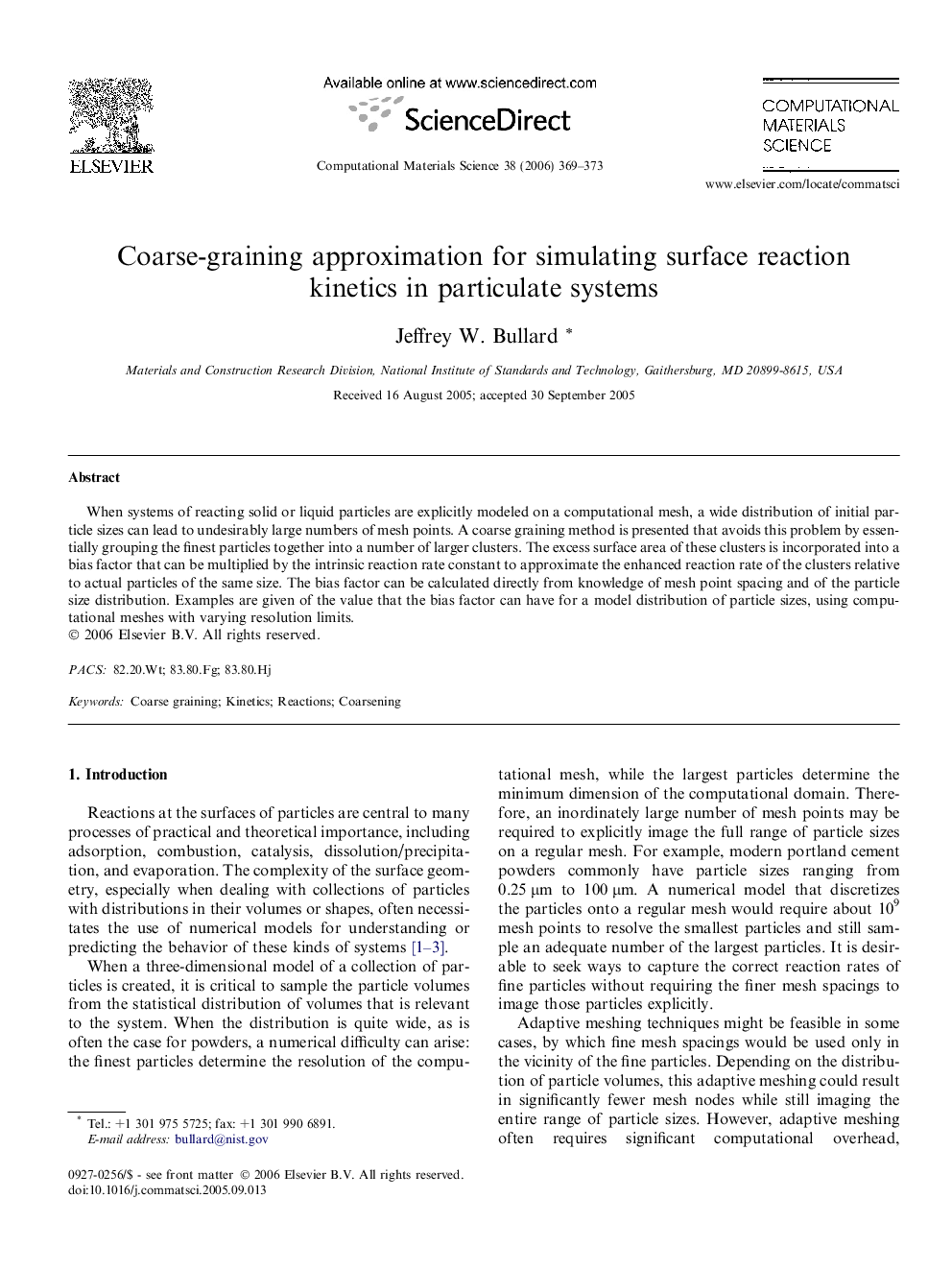| Article ID | Journal | Published Year | Pages | File Type |
|---|---|---|---|---|
| 1563998 | Computational Materials Science | 2006 | 5 Pages |
Abstract
When systems of reacting solid or liquid particles are explicitly modeled on a computational mesh, a wide distribution of initial particle sizes can lead to undesirably large numbers of mesh points. A coarse graining method is presented that avoids this problem by essentially grouping the finest particles together into a number of larger clusters. The excess surface area of these clusters is incorporated into a bias factor that can be multiplied by the intrinsic reaction rate constant to approximate the enhanced reaction rate of the clusters relative to actual particles of the same size. The bias factor can be calculated directly from knowledge of mesh point spacing and of the particle size distribution. Examples are given of the value that the bias factor can have for a model distribution of particle sizes, using computational meshes with varying resolution limits.
Related Topics
Physical Sciences and Engineering
Engineering
Computational Mechanics
Authors
Jeffrey W. Bullard,
